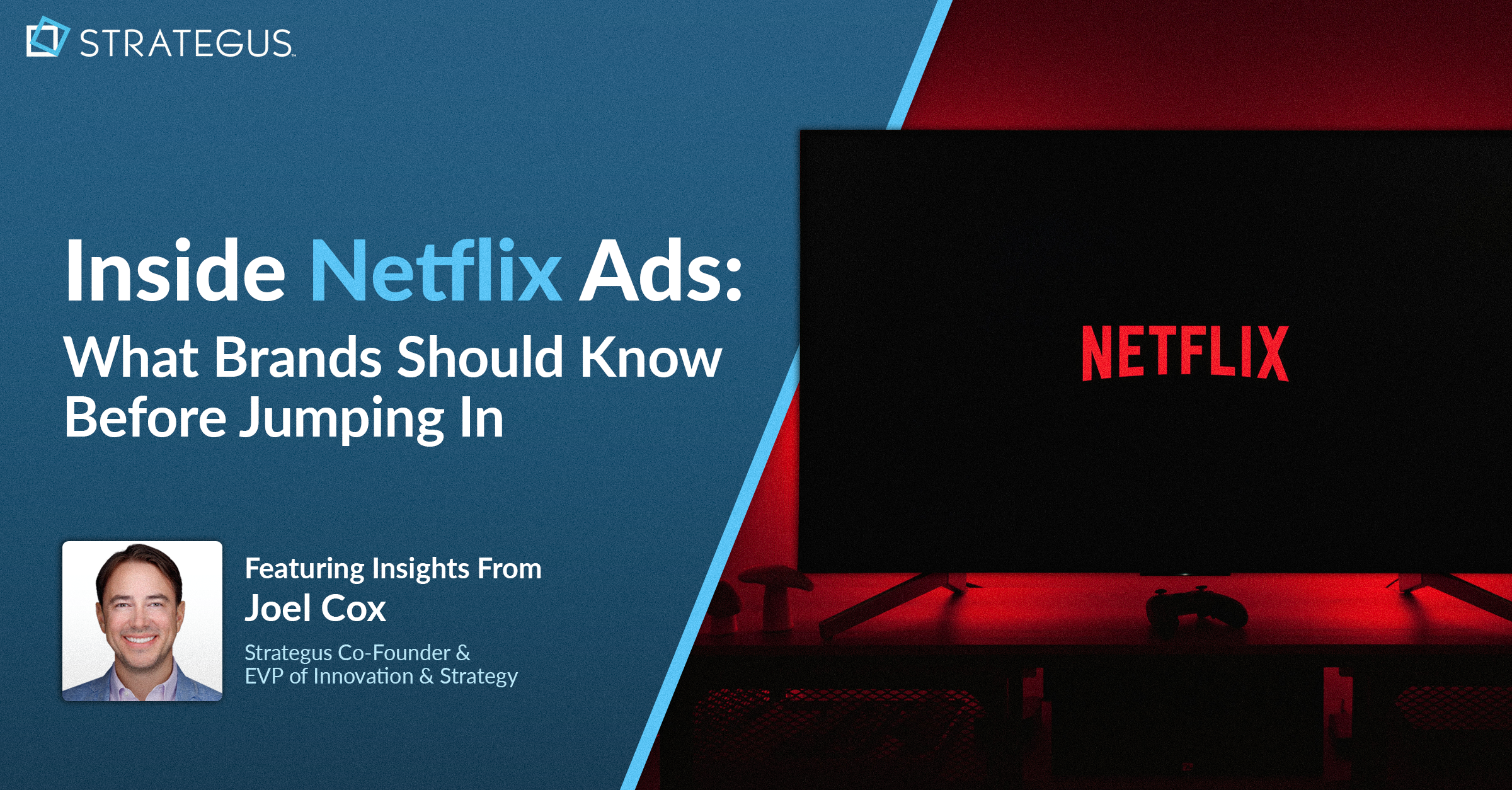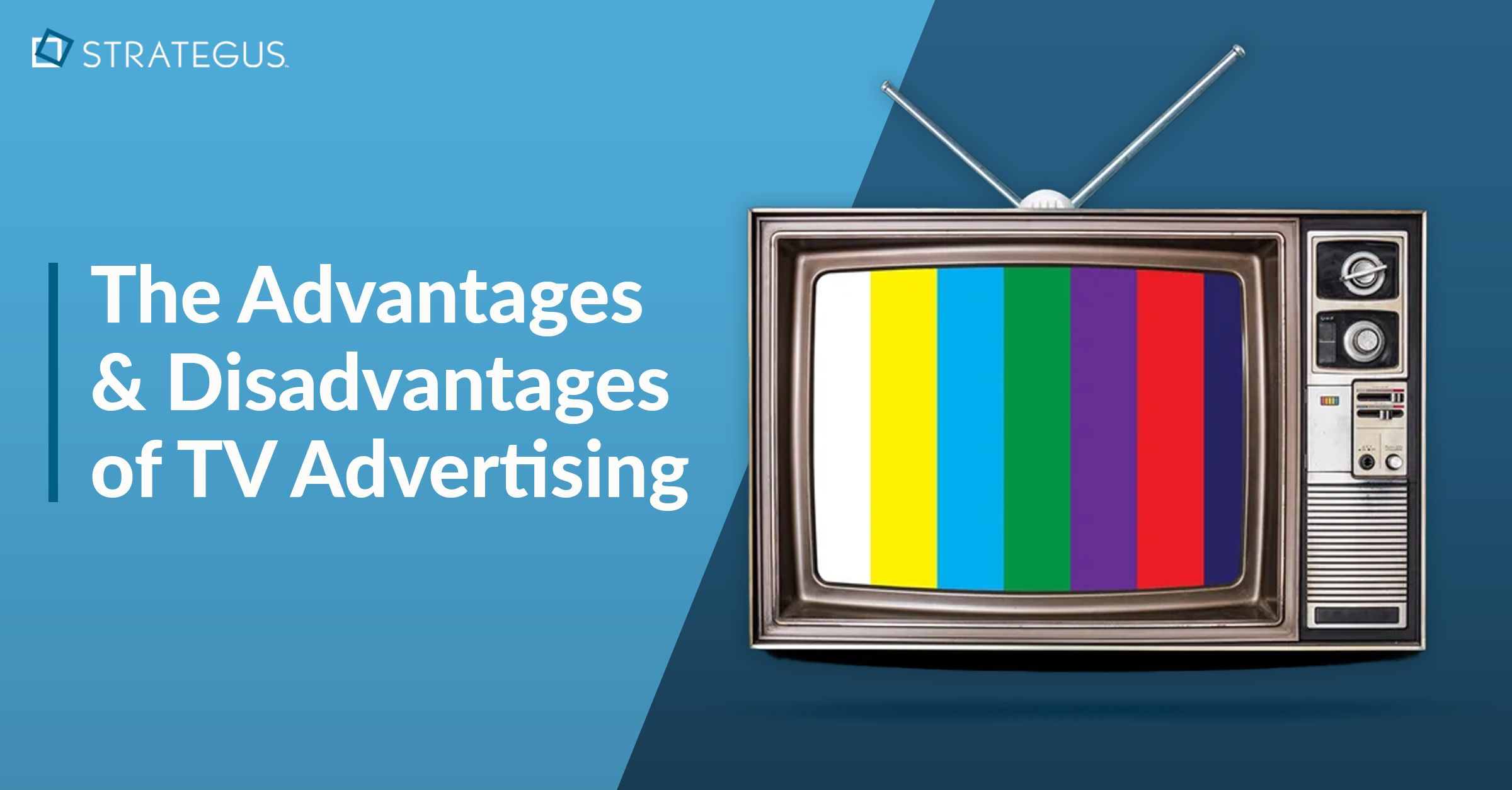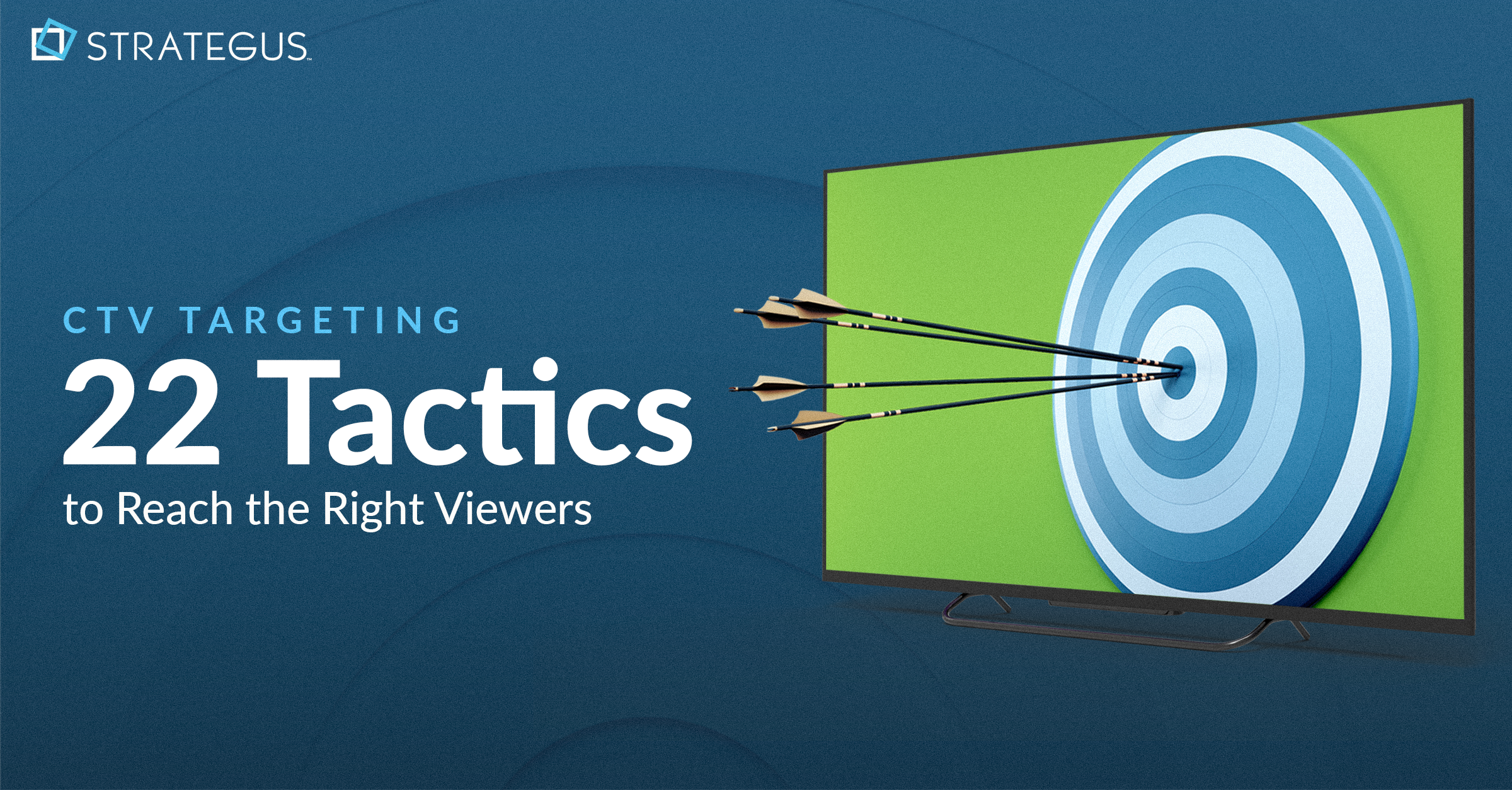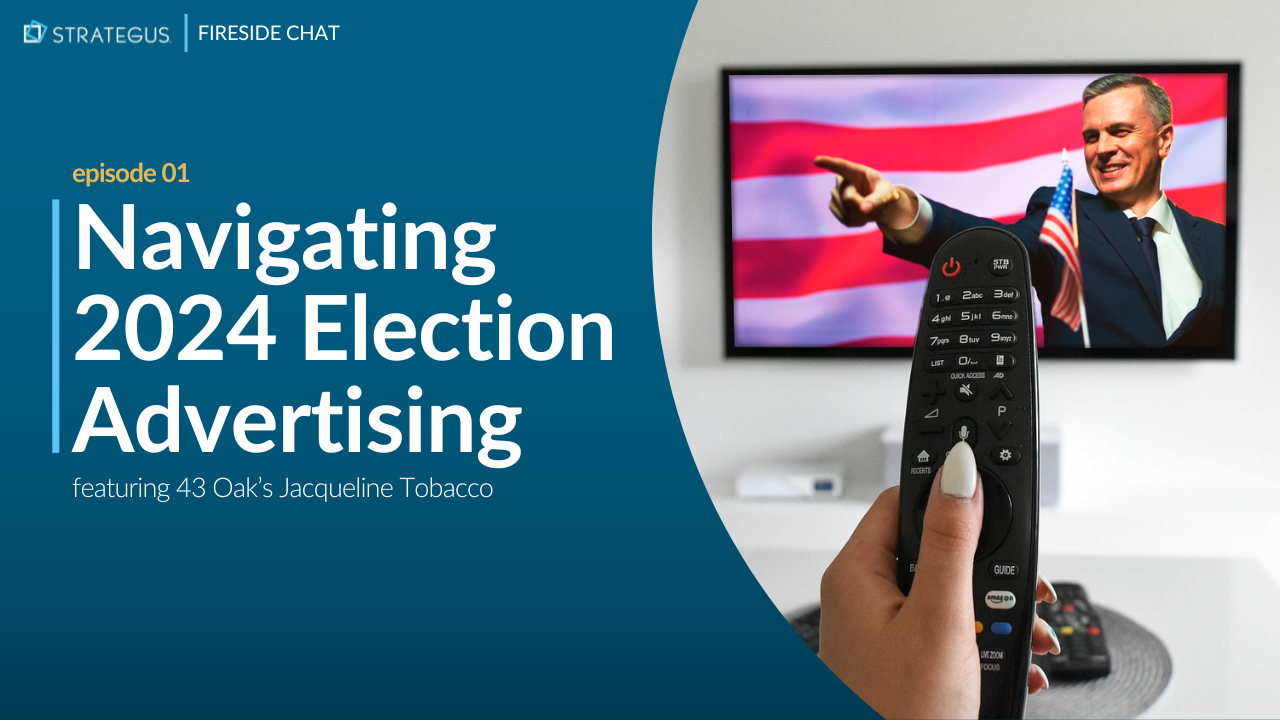- Home
- Strategus Blog
- Interactive Video Ads: CTV Formats for Driving Engagement
Interactive Video Ads: CTV Formats for Driving Engagement
 Traci Ruether
Traci Ruether
20 minutes read
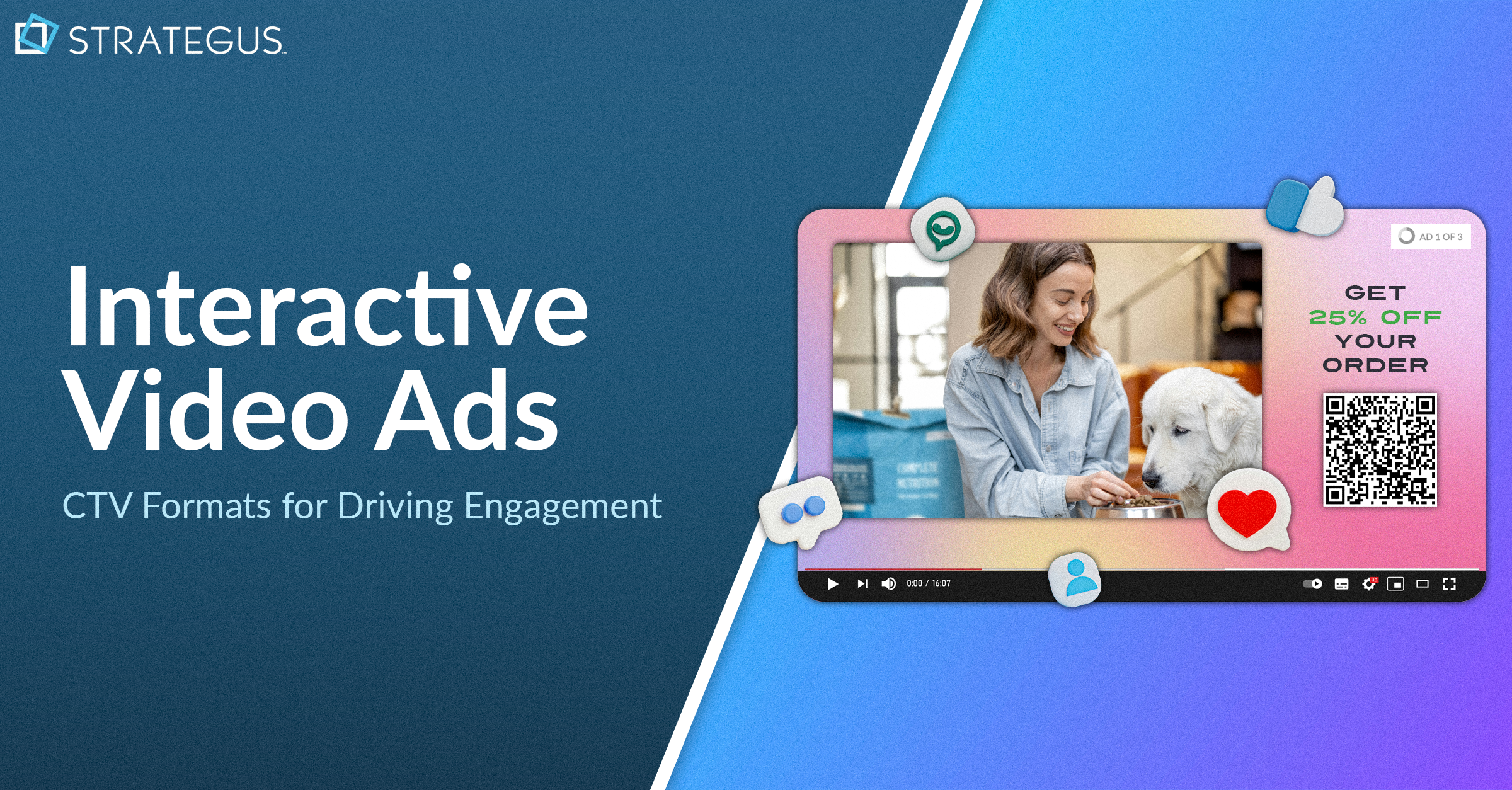
It used to be that TV advertising was a one-way street. Commercials talked at viewers, a.k.a. the passive recipients of the advertising message. While phone numbers and URLs could be used as a call to action (CTA), there was zero interaction between viewers and the on-screen creative.
Fast forward to today and this is no longer the case. All thanks to interactive video ads.
Clickable elements, QR codes, and gamification are all becoming a standard part of connected TV (CTV) advertising. Oftentimes, these ads aim to drive an immediate action, such as a website visit or online form submission. This down-funnel motion is achieved by eliminating friction — ideally leading to more sales, faster.
But not all dynamic CTV formats are focused on conversions. Interactivity also has a place in brand awareness. By grabbing viewer’s attention and spurring engagement, interactive video ads deliver a more memorable experience.

And this isn’t just hearsay:
- Interactive CTV ads drive a 52% lift in attention according to Sharethrough.
- Viewers have a 36% stronger unaided brand recall when exposed to these ads per research from Brightline.
What’s more, interactive ads offer additional signals to advertisers. For instance, a CTV campaign might use a survey to learn more about viewers' preferences. Other campaigns could prompt viewers to ‘choose their own ad experience,’ thereby providing valuable insight into customer preferences.
Source: The New York Times
But this all comes at a cost. Additional legwork goes into creative production, and CPMs can be up to 15% higher once interactivity comes into play. Interactive CTV ads are also more difficult to scale given the requirements of each streaming platform.
Below, we detail the interactive video formats available today, and offer additional tactics for driving CTV performance. If you’re already set on adding interactivity to your campaigns, just let us know — we support all the formats listed below.
- What Is Interactive CTV
- QR Codes
- Dynamic Overlays
- Clickable Formats
- Gamification
- Do Viewers Really Want On-Screen Interactivity?
- Other Ways to Engage Viewers and Drive Campaign Performance
What Is Interactive CTV?
Interactive CTV describes video ads that transform the traditional TV commercial into an engaging, two-way experience. By using dynamic overlays and clickable navigation, these ads prompt viewers to actively participate and interact with the content on their screens.

Interactive CTV can take various forms, including:
- QR codes: Scannable codes that, when captured with a smartphone, instantly connect viewers to specific web pages, promotional offers, or app downloads.
- Clickable elements: Overlays or buttons that allow viewers to click and learn more about a product, visit a landing page, or even make a purchase without leaving their TV screen.
- Gamification: Game-like elements such as quizzes, polls, or rewards to boost engagement and create a more memorable brand experience.
Benefits of Interactive Video Ads
Interactive CTV isn't just about driving immediate conversions (though it excels at that). It's also a powerful tool for boosting brand awareness, gathering audience insights, and fostering a deeper connection with viewers.
Benefits include:
 Capturing attention
Capturing attention
in a cluttered advertising landscape.
 Quicker progression down the sales funnel
Quicker progression down the sales funnel
through direct engagement.
 Gathering valuable customer insights
Gathering valuable customer insights
through interactive elements. Boosting brand awareness
Boosting brand awareness
and fostering stronger connections with viewers.
 Improved ad recall
Improved ad recall through a more memorable ad experience.
This data can then be used to create detailed buyer profiles and personalize ad campaigns to different segments.
QR Codes
When most people think of interactive CTV, they immediately picture a QR code. It all started a couple of years ago at the 2022 Super Bowl, when Coinbase debuted the first major QR code commercial.
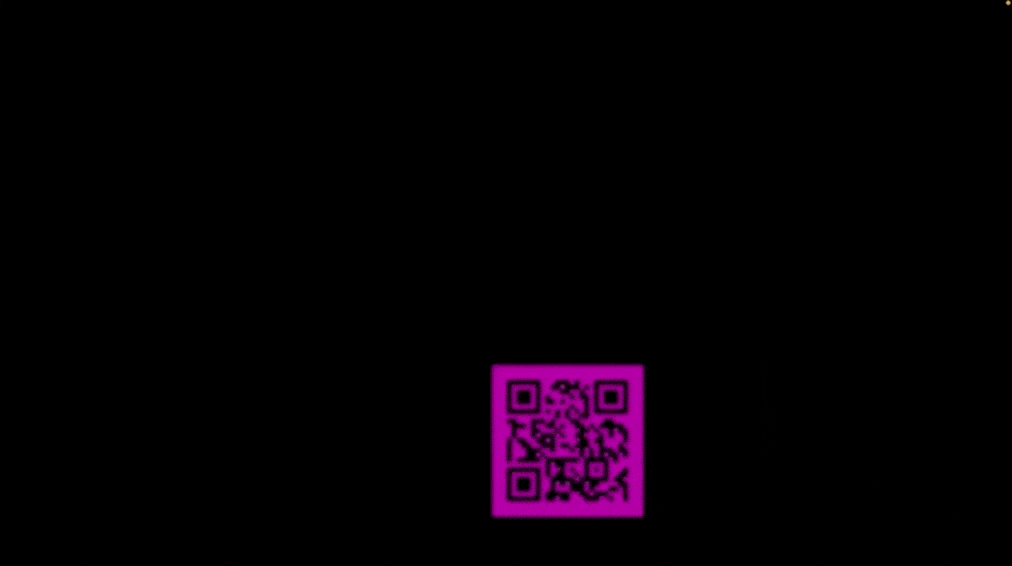
Source: Branch
The groundbreaking ad was objectively a bore: it featured a slowly bouncing QR code for a full 60 seconds. Despite this, engagement was so high that the campaign crashed the Coinbase app thanks to the 20 million plus people who jumped up to scan their screen.

This was a pivotal moment in advertising because it proved beyond any doubt that TV advertising didn’t have to be approached as a passive medium. Rather, interactive formats could drive immediate action, even with seemingly simplistic creative.
The Coinbase ad wasn't just a commercial; it was a call to action that viewers couldn't ignore, setting a new standard for engagement in the CTV era.
Today, QR codes abound. And while it’s doubtful that another QR code campaign will ever see the same success that Coinbase did, there are still several benefits to this tactic.
Specifically:
- QR codes make TV commercials clickable.
- They engage viewers across multiple screens and devices.
- They provide transparency and measurability to advertisers.
That said, a commercial has to be super compelling to prompt someone to reach into their pocket and scan a code during a 30-second ad break. This was likely a reason why Coinbase went with the full 60-seconds spot and such a bare-bones approach.
But advertisers are solving for this by adding dynamic overlays that catch viewers’ attention and showcase the QR code.
Dynamic Overlays
Dynamic overlays add a layer of visual appeal and real-time relevance to CTV ads. While they aren’t inherently interactive, when paired with a QR code, they become a powerful tool for driving viewer engagement.
These overlays can take a few different forms, so let’s get into each type.
Countdown Overlay
For anything constrained to a set amount of time, such as a product launch, short-term promo, or upcoming release, countdown timers help capture the urgency in a palpable way.

Say a furniture store was running a Labor Day sale event, and they’d built a custom landing page with all of the details. Pairing this type of overlay with a QR code would be a perfect fit, prompting viewers to take action before time runs out.
Viewers are 43% more likely to remember the promotion start date with a countdown overlay.
Weather Overlay
Who doesn’t like helpful and personalized information? Weather overlays deliver just that, tailoring more generic CTV ads to a viewer’s local weather conditions.

This approach works best when the forecast supplements your message — such as when an ad for sunscreen plays on a scorching summer day or a beachy destination fills the screen during the thick of winter.
Consumers are 53% more likely to pay attention to ads with useful information
Sports Ticker
Let’s face it: Sports fans don’t love commercial breaks. But what if the ads could provide real-time updates and scores from games?
Sub in sports tickers.

Sports tickers keep viewers' eyes glued to the screen by sharing the latest scores and schedules of local football, basketball, baseball, hockey, golf, and soccer games.
Attention-catching? Check.
Relevant and personalized? Check. Check.
Positive brand associations? Check. Check. Check.
Fans are 91% more attentive to ads with sports tickers
Social CTV
Vertical video formats, user-generated content (UGC), and interactive elements like emojis and comments dominate social media. Consumers are accustomed to these formats, so why not bring them to the big screen?
Social CTV does just that.

Social CTV ads are TV ads created from social media posts. They can be made quickly and easily and cost less than traditional TV ads. This format also helps increase brand awareness and engagement.
Some of the benefits of using social CTV creative ads include:
Quick and easy to make.
- Lower production costs than traditional TV ads.
- Increase brand awareness through authentic messaging.
- Increase engagement by pulling updated social metadata (like, comment, and view counts)
And like the other formats in this section, social video ads can be paired with QR codes to seamlessly link TV and online touchpoints.
Clickable Formats
While QR codes and dynamic overlays bridge the gap between CTV and mobile devices, they still ask users to grab their smartphones and scan the screen rather than offering a truly native method of engagement.

With clickable formats, viewers can interact directly with the ad using their remote control – no smartphone required. This eliminates the friction of switching devices and creates a more immersive experience, keeping viewers fully engaged with the big-screen TV.
Clickable formats come in several flavors, including store locators, galleries, and carousels, the ability to choose your own commercial, and on-screen contact info submission.
Store Locators
Imagine a pizza franchise that wanted to personalize ads to different viewers by instantly displaying the nearest location. That’s the power of store locator ads.

This format uses the viewer’s location data to dynamically highlight nearby stores, seamlessly integrating on-screen and offline touchpoints. This enables viewers to progress down the buyer’s journey in real time, locating your business without any effort.
Store locators deliver a level of personalization and relevance that's hard to beat. Beyond just highlighting the closest location, they also give viewers the ability to scroll through multiple other locations, further driving foot traffic.
Galleries and Carousels
Galleries and carousels offer viewers a visually rich and interactive way to explore additional content without leaving the comfort of their CTV screen. By showcasing a collection of images, videos, or products, these formats provide an immersive experience that encourages viewers to delve deeper into your offerings.
Some examples include:
- Photo Galleries: Showcase stunning visuals of your products, destinations, or brand stories, allowing viewers to browse at their own pace.
- Video Galleries: Highlight multiple video clips, testimonials, or product demonstrations, offering a more dynamic and engaging experience.
- Product Carousels: Feature a rotating selection of products, complete with details and pricing, enabling viewers to explore your offerings and make informed decisions.

These formats are particularly effective for industries with extensive product lines, visually appealing content, or complex offerings that require more in-depth exploration. They transform your CTV ad into a mini-showcase, giving viewers the freedom to discover what piques their interest and learn more about what you have to offer.
Choose-Your-Own Commercial
Remember those "Choose Your Own Adventure" books where you could decide the fate of the story? Choose-your-own commercial ads bring that same interactive storytelling to the world of CTV advertising. By letting viewers select which ad they watch, this format puts viewers in the driver's seat.

It works like this: During a commercial break, viewers are presented with an ad selection screen with 2-3 options, each representing a different storyline or product focus. Viewers then use their remote to select the ad that piques their interest most. If no selection is made within 15 seconds, the currently highlighted option (typically the first spot) will play automatically.
Submit Contact Info
Want an alternative to giving users a QR code that brings them to a contact form? With the submit contact info format, viewers can opt into a campaign or request further information using only the remote.

This format uses a clear CTA like "send me a coupon" or "request a quote," followed by a prompt to enter their phone number or email address. The benefits are twofold:
- Immediate opt-in: Viewers can express their interest instantly, eliminating the need for them to remember to follow up later.
- First-party data collection: Advertisers gain valuable contact information, building their audience list and enabling future targeted marketing efforts.
This frictionless approach to lead generation not only boosts engagement but also empowers you to nurture those warm leads and convert them into loyal customers down the line. It's a win-win for viewers and advertisers.
Gamification
Looking to drive brand awareness with high-engaging experiences? Gamification injects a playful element, captivating viewers with quizzes, surveys, and mini-games.
Surveys
Want to gain insight into your audience's preferences and opinions? Surveys make it easy.
Check out this example from Loreal, which lets users self-identify their skin concerns and then provides a relevant QR code based on their selection. This doesn’t just help advertisers gather real-time data, it also enables the user to opt into a more relevant campaign based on personal needs.

And surveys don’t have to use a QR code. They can also be used to give viewers a feedback channel. For instance, an insurance company might use a survey overlay to gauge customer satisfaction or gather insights on their Net Promoter Score (NPS).
Regardless of how the survey is configured, this format a direct line of communication with your audience, providing invaluable data that can inform your marketing strategies and drive future success.
Trivia and Quizzes
Much like surveys, trivia ads present multiple-choice questions for viewers to interact with. The content can be crafted to highlight brand differentiators while tapping into people's competitive nature.
For instance, a cosmetics brand might ask when sunscreen was invented. Or, a car dealership could quiz viewers on the difference between four-wheel drive vs. all-wheel drive.

The purpose of this format is to pique viewers’ interest with a fun brain teaser. Rather than driving conversions, trivia ads are more about standing out during the commercial break by creating a memorable experience.
Games
Last but not least, we have good old games. These provide a unique and interactive way for viewers to connect with your brand during the ad break, taking your ads to the next level.

Imagine a quick puzzle, memory match, or game of change. The possibilities are endless. And the reward? Heightened engagement and brand recall.
Do Viewers Really Want On-Screen Interactivity?
Having detailed all these formats, it’s time to play devil’s advocate.
Do viewers really want on-screen interactivity? Or are they more inclined to let the ads run their course and consume CTV passively?
Our guess is that it all depends. While sometimes, scanning a QR code might be super convenient, for certain products and campaigns, it doesn’t make sense.
For that reason, it’s worth considering other options for driving engagement, such as cross-device retargeting, sequential storytelling, and ad personalization.
Other Ways to Engage Viewers and Drive Campaign Performance

Multi-Channel Campaigns Using Cross-Device Retargeting
Rather than putting all your chips in a QR code, why not deterministically retarget people who’ve been exposed to a brand with clickable formats like display ads? This tactic enables advertisers to follow people who’ve seen their CTV ads across devices and deliver the best message at each touchpoint.
For instance, a law firm might start by driving awareness on the big screen, and then follow the same people across streaming audio platforms like Pandora, social media apps like Instagram, and online video platforms like YouTube.
The exact media mix for a retargeting campaign will vary based on each business model. But regardless of industry, the aim should be to deliver an integrated experience that moves buyers down the funnel. Here’s an example of how you might design a multi-channel CTV campaign that does just that:
|
Stage
|
Channels and Approach
|
|
Awareness |
|
|
Consideration |
|
|
Conversion |
|
At Strategus, we take a unique approach to CTV retargeting that combines big-screen ads with omnichannel strategies across the programmatic ecosystem. Not only does this ensure a consistent experience for consumers, it can also increase conversion by more than 200%.
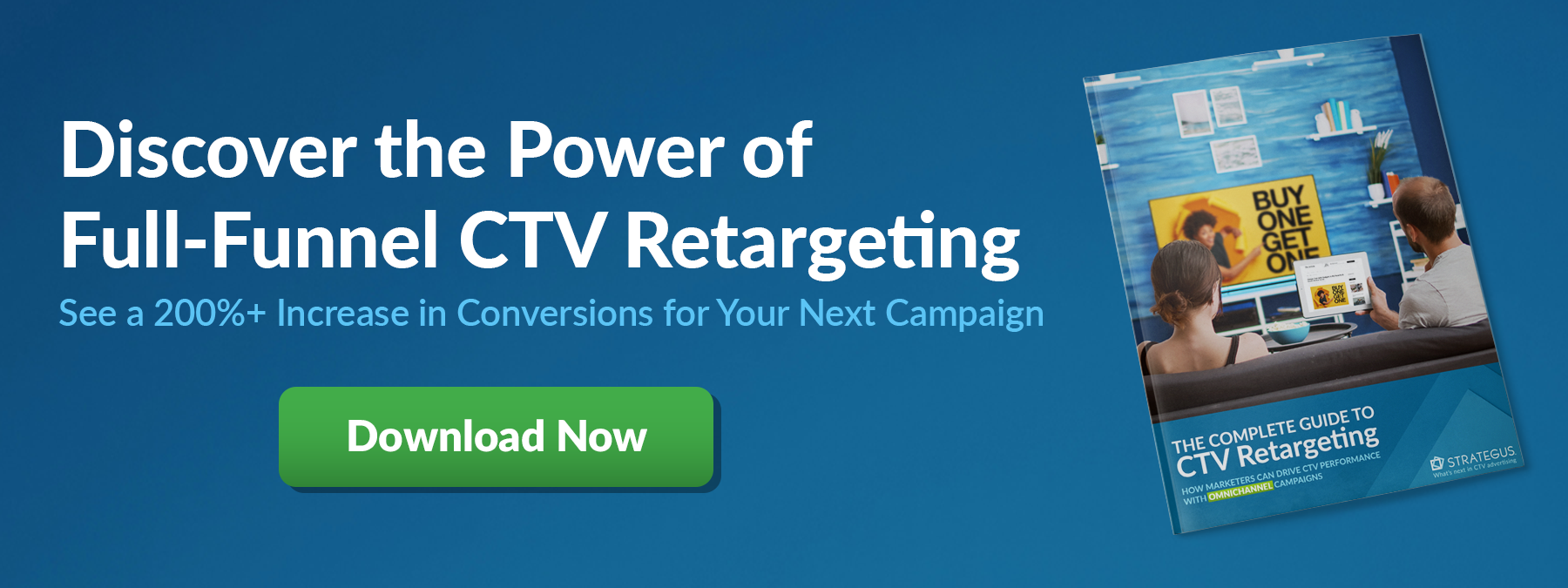
Sequential Storytelling
Sequential CTV creatives allow you to tell a story that unfolds across multiple ads, rather than cramming everything into one. The sequence can even be personalized based on viewer interaction.
For example, viewers who complete a CTA in ad A might receive a tailored follow-up message with ad B, while those who don't complete the CTA will be served ad C. This approach fosters deeper engagement with your brand story, keeping viewers intrigued by tailoring the sequence to their journey.
Ad Personalization
Rather than making viewers select which ad experience is the most relevant to them, why not do it for them?
Given the advanced targeting capabilities of CTV, you should already have your campaigns segmented to different buyers. From there, adapting the creative to resonate with each individual shouldn’t be that big of a lift. Capabilities like dynamic creative and social media repurposing can help you quickly iterate using existing assets — both of which Strategus supports.
What would this look like? Say a Colorado Travel company identified three key customer segments: ski and snowboard enthusiasts, outdoor adventurers, and luxury travelers.
The ad creative could be planned as follows:

Ski and Snowboard Enthusiasts
This ad would showcase the most well-known ski resorts, clips of downhill action, and highlight an early bird promo for the winter season.

Outdoor Adventurers
This ad might showcase breathtaking hikes, pristine lakes, and idyllic camping locations.

Luxury Seekers
For this segment, the creative would showcase a spa nestled in the mountains, gourmet dining experiences, five-star hotels, and exclusive VIP deals.
Maximize Your CTV Impact with Interactive Video Ads
Connected TV (CTV) advertising is a powerful tool for agencies and brands looking to move beyond broad awareness with more results-driven campaigns. But this requires taking a different approach than you would to traditional TV commercials.
If you’re ready to add interactive elements and cross-channel retargeting to your campaigns, you’ve come to the right place. We support all of the formats detailed above and approach each CTV campaign holistically by designing a full-funnel strategy.
Want to learn more about how our team of experts will work with you to develop a conversion-focused strategy tailored to your needs? Contact us today.

Traci Ruether is a content marketing consultant specializing in video tech. With over a decade of experience leading content strategy, she takes a metrics-driven approach to storytelling that drives traffic to her clients' websites. Follow her on LinkedIn at linkedin.com/in/traci-ruether or learn more at traci-writes.com.
Strategus is a managed services connected TV(CTV) advertising agency with over 60,000+ campaigns delivered. Find out how our experts can extend your team and drive the result that matter most.
Talk to an Expert
Table of Contents
Seeking a Custom CTV Strategy That Delivers?
What to read next
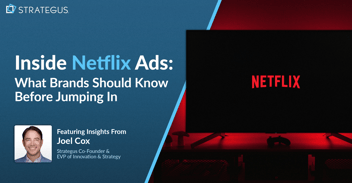
Inside Netflix Ads: What Brands Should Know Before Jumping In
A few years ago, Netflix was the ad-free paradise we all turned to for uninterrupted binge-watching. But today, keeping up with every streaming...
5 minutes read
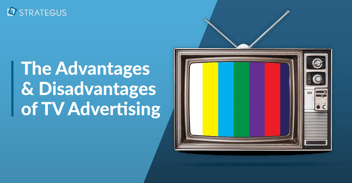
The Advantages and Disadvantages of TV Advertising
Chances are you remember a few iconic commercials from childhood. For me, the Budweiser ‘Wassup’ campaign comes to mind. It was embedded in early...
13 minutes read
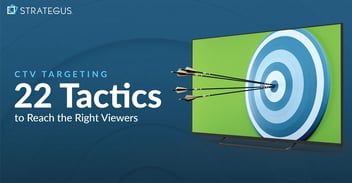
CTV Targeting: 22 Tactics to Reach the Right Viewers
Targeted advertising has been around since the early days of the internet. And while it often brings to mind the ads we see while browsing the...
17 minutes read
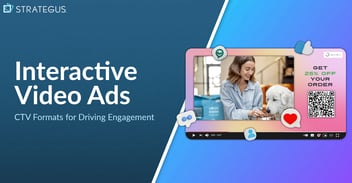
Interactive Video Ads: CTV Formats for Driving Engagement
It used to be that TV advertising was a one-way street. Commercials talked at viewers, a.k.a. the passive recipients of the advertising message....
20 minutes read



